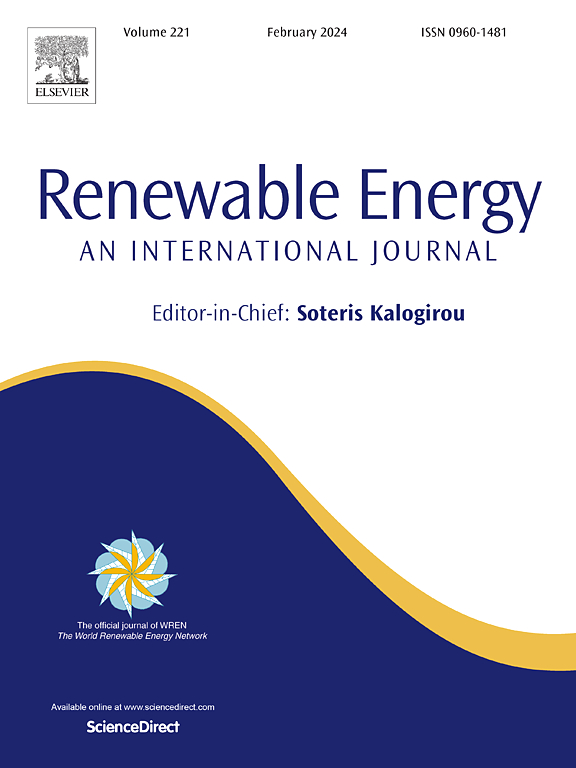凤凰树叶与纯化对苯二甲酸污泥灰基生物炭原位共热解制备优质合成气
IF 9.1
1区 工程技术
Q1 ENERGY & FUELS
引用次数: 0
摘要
提出了一种创新的循环原位共热解工艺,用于协同处理凤凰树叶(PTL)和纯化对苯二甲酸污泥灰(PTASA)。系统研究了循环共热解对三相产物演化、焦油组成和生物炭稳定性的影响,并阐明了其协同作用机制。结果表明,在第四轮循环共热解过程中,综合热解指数(CPI)值提高了261%。同时,PTASA的加入使合成气收率提高到69.77%,促进了焦油的裂解,使焦油收率降至1.98%,因为10个以上碳原子的焦油组分被进一步分解。在共热解过程中,Mn和Ca元素主要以(CaO)0.9(MnO)0.1的稳定形态存在,而Co元素则由于碳的还原和富氧PTL中含氧化合物的氧化作用,以金属(Co)和氧化物(CoO)形态存在。值得注意的是,第5轮循环共热解生成的生物炭H/C和O/C值最低,热稳定性最高。本文章由计算机程序翻译,如有差异,请以英文原文为准。

Cyclic in-situ co-pyrolysis of Phoenix Tree's Leaves and Purified Terephthalic Acid Sludge Ash based biochar for producing high-quality syngas
An innovative cyclic in-situ co-pyrolysis process was proposed for the synergistic treatment of Phoenix Tree Leaves (PTL) and Purified Terephthalic Acid Sludge Ash (PTASA). The influence of cyclic co-pyrolysis on the evolution of three-phase products, tar composition, and biochar stability was systematically investigated, and the underlying synergistic mechanism was elucidated. Results indicated that the Comprehensive pyrolysis index (CPI) value increased by 261 % in the fourth round of cyclic co-pyrolysis. Meanwhile, the addition of PTASA enhanced the yield of syngas to 69.77 %, and facilitated the tar cracking, reducing the tar yield to 1.98 %, as the tar components more than 10 carbon atoms were further decomposed. In the co-pyrolysis process, the elements Mn and Ca mainly existed in the stable form of (CaO)0.9(MnO)0.1, while Co existed in the metallic (Co) and oxide (CoO) forms due to the reduction by carbon and the oxidation by oxygenated compounds in oxygen-rich PTL. Notably, the biochar derived from the fifth round of cyclic co-pyrolysis exhibited the lowest H/C and O/C values, indicating the highest thermal stability.
求助全文
通过发布文献求助,成功后即可免费获取论文全文。
去求助
来源期刊

Renewable Energy
工程技术-能源与燃料
CiteScore
18.40
自引率
9.20%
发文量
1955
审稿时长
6.6 months
期刊介绍:
Renewable Energy journal is dedicated to advancing knowledge and disseminating insights on various topics and technologies within renewable energy systems and components. Our mission is to support researchers, engineers, economists, manufacturers, NGOs, associations, and societies in staying updated on new developments in their respective fields and applying alternative energy solutions to current practices.
As an international, multidisciplinary journal in renewable energy engineering and research, we strive to be a premier peer-reviewed platform and a trusted source of original research and reviews in the field of renewable energy. Join us in our endeavor to drive innovation and progress in sustainable energy solutions.
 求助内容:
求助内容: 应助结果提醒方式:
应助结果提醒方式:


